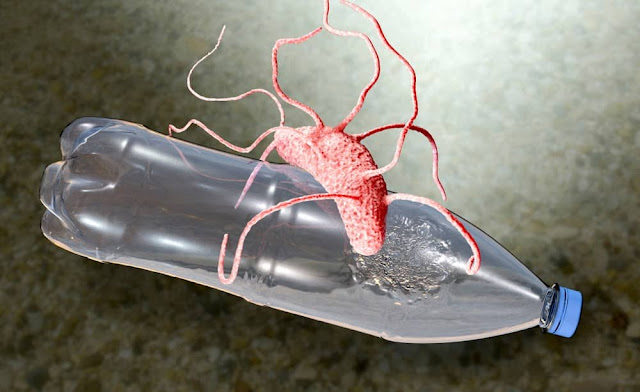Harnessing The Power Of Plastic Eating Bacteria
 |
| Plastic Eating Bacteria |
Plastic pollution is a global crisis, with millions of tons of plastic waste ending up in our oceans and landfills every year. But what if nature had a solution to this problem? Enter plastic-eating bacteria, a fascinating discovery that offers hope in the fight against plastic pollution.
These remarkable
microorganisms have the ability to break down plastic polymers into harmless
byproducts, offering a sustainable way to deal with Plastic
Eating Bacteria waste. In this article, we'll explore the science
behind plastic-eating bacteria and their potential applications in tackling the
plastic pollution crisis.
From Discovery to
Application: Unveiling the Plastic-Eating Superheroes
Plastic-eating bacteria
were first discovered in 2016 by Japanese researchers who found a strain of
bacteria, Ideonella sakaiensis, capable of breaking down PET (polyethylene
terephthalate), a common plastic used in bottles and containers. Since then,
scientists have identified several other species of bacteria with similar
plastic-degrading abilities.
Understanding the
Mechanisms: How Do They Do It?
Plastic-eating bacteria
produce enzymes, such as PETase and MHETase, that enable them to digest plastic
polymers. These enzymes break down the plastic into smaller molecules that the
bacteria can use as a food source. This process, known as biodegradation,
offers a promising solution for reducing plastic waste in the environment.
Applications and Future
Prospects: Turning Trash into Treasure
The discovery of
plastic-eating bacteria opens up a world of possibilities for addressing
plastic pollution. Scientists are exploring various applications, including
using these bacteria to biodegrade plastic waste in landfills, wastewater
treatment plants, and even in the ocean.
Furthermore,
researchers are working on genetically engineering bacteria to enhance their
plastic-degrading capabilities and optimize their performance in different
environments. If successful, this could revolutionize waste management and help
mitigate the environmental impact of plastic pollution.
Challenges and
Considerations: Navigating the Road Ahead
While plastic-eating bacteria show great promise, there are still challenges to overcome. Questions remain about the long-term effects of introducing these bacteria into ecosystems and the potential risks associated with genetic modification. Ethical considerations also come into play, highlighting the need for responsible research and decision-making.
Plastic-eating bacteria
offer a ray of hope in the battle against plastic pollution. By harnessing the
power of nature, scientists have unlocked a potential solution that could
transform the way we manage plastic waste. However, further research and
collaboration are needed to ensure that we navigate this promising path forward
responsibly.
Get
more insights, On Plastic
Eating Bacteria
Explore More on - Plastic
Eating Bacteria



Comments
Post a Comment